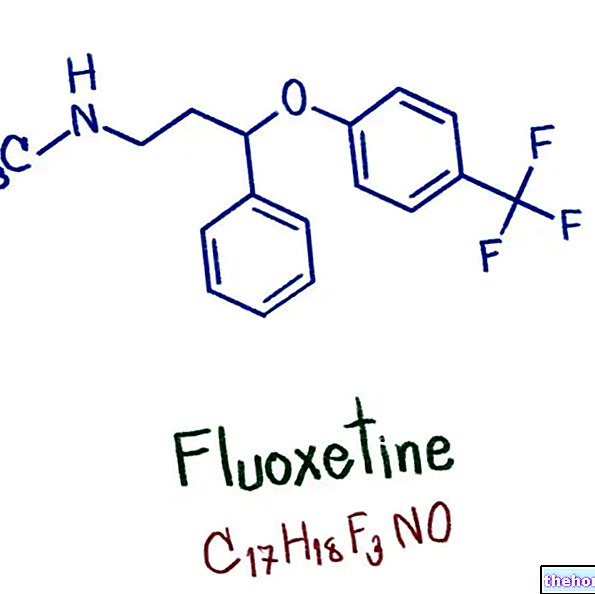Ephedrine is the active ingredient extracted from the plant Ephedra sinica or yellow hemp. The extract is known in the herbalist field with the trade name MA HUANG, used as a decongestant and anti-asthmatic decoction in Chinese folk medicine. mixed.

At this point it should be remembered that these substances have serious side effects: at the cardiovascular level there is an increase in pressure and cardiac activity, with severe strain on the myocardial cells; in the long run, inappetence can turn into anorexia; insomnia persists even after the suspension of the use of the substance, therefore the organism suffers from the lack of hours of sleep and ultimately rest; states of anxiety and nervousness end in depressive states.
Often these blends are advertised as dietary supplements with slimming, energizing and improving athletic and non-athletic performance properties. In Italy, ephedrine is classified as a doping substance, therefore illegal; in the sports field the use of pre-performance ephedrine is punished with the disqualification of the athlete. On the web you can find blends and / or fat-burning supplements containing ephedrine and the like; in Italy, in order to be able to market them, ephedrine as such was replaced with an equivalent compound, synephrine, an alkaloid contained in the peel of bitter orange.
There is a legislative and regulatory discipline, phytovigilance, which deals with promptly reporting the possible adverse reactions (adverse event that occurs with a recommended use of these products) of phytotherapeutic compounds, including mixtures containing ephedrine mentioned above.Phytovigilance is the daughter of pharmacovigilance, a regulatory discipline that deals with collecting and reporting adverse reactions to drugs already on the market. These reactions are reported by pharmacists and doctors to the appropriate offices. Let's see what this discipline discovered about dietary supplements or products containing ephedrine. The FDA (Food and Drug Administration) has found that some individuals who use products containing ma huang they present adverse reactions concerning above all the cardiovascular system, such as myocardial infarction, cerebral and cardiac ischemias, up to sudden death. These reactions affect, beyond the predisposition of some individuals, also healthy and young subjects, and especially women.
The more frequent use of this compound by young people is explained precisely by the more intense lifestyle of the latter; the effects sought are weight loss, recovery and strengthening of muscle mass, energy potential. demonstrated that the manifestation of these adverse reactions occurred despite the preparations being taken in the recommended doses, and not concomitantly with other preparations that potentiate their effects. FDA data show that the use of ma huang it can be associated with sudden death phenomena, even if there are no structural changes in the heart. Ephedrine was found to be the active ingredient in phytotherapeutic compounds, vitiated by the greatest number of adverse reactions, although it is sold in smaller quantities.
Ephedrine is included in the US "list of"smart drugs", Marketed in"smart shops": Commercial establishments that resell natural substances, defined as" smart "drugs; natural substances that contain active ingredients not classified as narcotic agents or substances of abuse, therefore not punishable by law, but no less dangerous for this. The most common smart drugs, sold in the form of air fresheners, are sought after for their stimulating effects on the CNS, with increased brain potential, learning and memory capacity, the onset of sensory and hallucinogenic visions, and to improve athletic performance.
There are particular mixtures of different (legal) drugs, prepared to have the same effect as ephedrine; energizing drugs such as colanut, guarana and ginseng are commonly associated with ma huang, which enhance their action. These associations, due to their powerful mimetic sympathetic action, are known as "herbal ecstasy". It is interesting to note that the toxicity, defined in LD50 (lethal dose for 50% of the animal guinea pigs on which it was tested), varies between single active ingredient and phytocomplex: in fact, ephedrine as such has a LD50 equal to 64, 9 mg / kg, while that of ma huang (phytocomplex) is equal to 5.4 mg / kg; ephedra extract is more dangerous than ephedrine precisely because inside the extract, in addition to ephedrine, there are other alkaloids that enhance its effect. Toxicity occurs both in the CNS with tremors, anxiety, restlessness, confusion and hallucinations; but also at the cardiovascular level with cardiac and cerebral ischemias. In Italy the alkaloids contained in the ephedra are not considered narcotic substances, while the ephedrine, the pseudoephedrine and the malephedrine are not salable because they are defined substances of probable manipulation for the home production of amphetamines; they are therefore not narcotic substances but, legally speaking, considered doping substances. In the USA since 2004 the sale of all products containing ephedra derivatives is prohibited.
Other articles on "Ephedrine: properties and contraindications of" ephedrine "
- Direct acting sympathomimetic drugs
- Tyramine - pharmacology




























